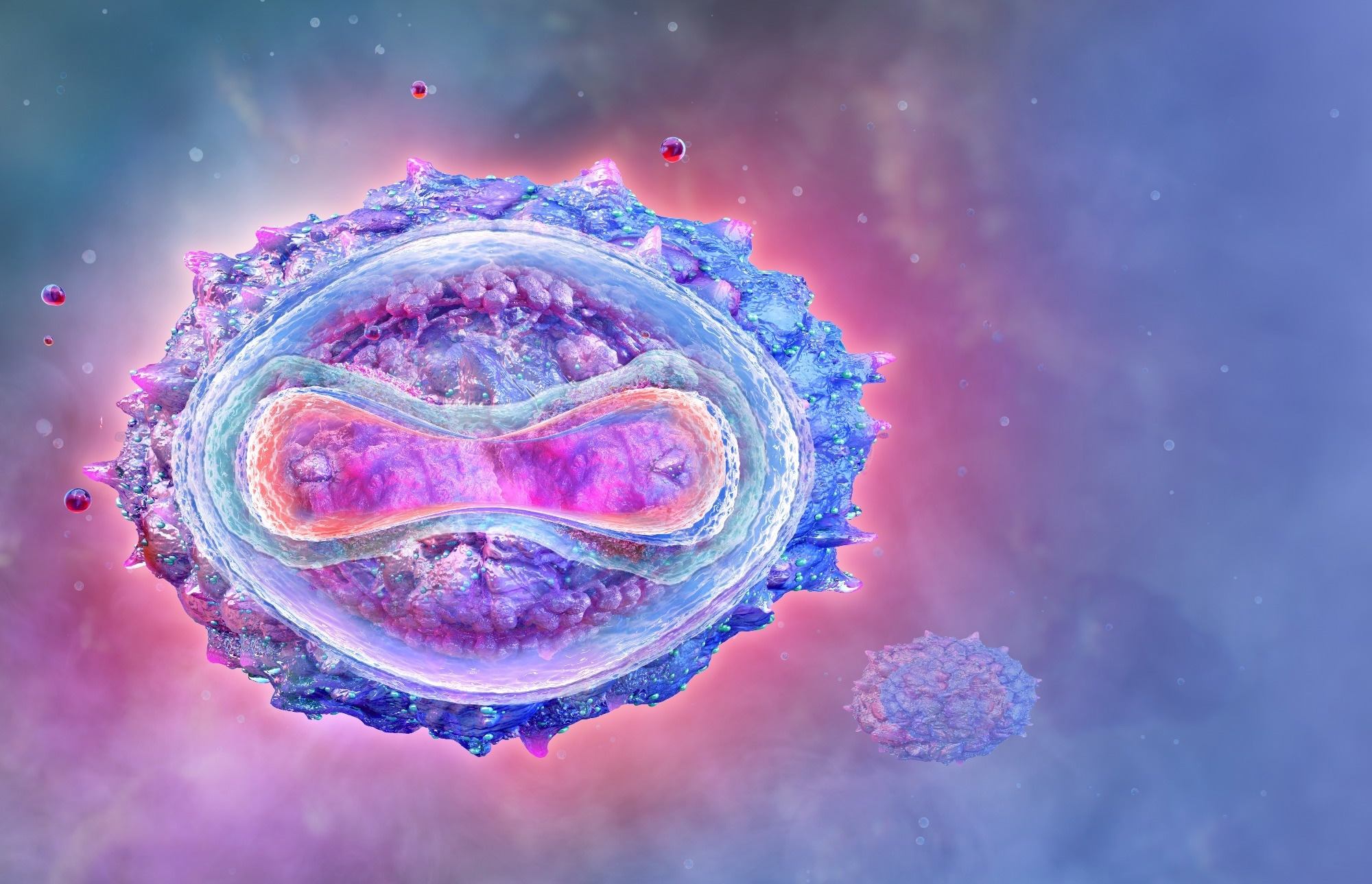In a recent study posted to the bioRxiv* preprint server, researchers investigated the correlation between monkeypox virus (MPXV) infectivity and viral DNA content in clinical specimens.
 Study: Monkeypox DNA correlates with virus infectivity in clinical samples. Image Credit: Corona Borealis Studio/Shutterstock
Study: Monkeypox DNA correlates with virus infectivity in clinical samples. Image Credit: Corona Borealis Studio/Shutterstock

 This news article was a review of a preliminary scientific report that had not undergone peer-review at the time of publication. Since its initial publication, the scientific report has now been peer reviewed and accepted for publication in a Scientific Journal. Links to the preliminary and peer-reviewed reports are available in the Sources section at the bottom of this article. View Sources
This news article was a review of a preliminary scientific report that had not undergone peer-review at the time of publication. Since its initial publication, the scientific report has now been peer reviewed and accepted for publication in a Scientific Journal. Links to the preliminary and peer-reviewed reports are available in the Sources section at the bottom of this article. View Sources
Background
MPXV is a zoonotic virus from the Poxviridae family with a double-stranded DNA genome. Exposure to the virus could result from interaction with wild animals and contact with infected individuals or infectious fomites. The first known case of human MPX occurred in Central Africa in 1970; sporadic outbreaks have occurred in West and Central Africa ever since. The first human MPX case was reported in the United Kingdom (UK) in May 2022.
So far, more than 28,000 cases have been reported worldwide, and most cases were among the men who have sex with men (MSM) community. Currently, MPX is diagnosed by an MPXV-specific polymerase chain reaction (PCR) test. The presence of MPXV DNA in a specimen does not imply infectivity, which limits the assessment of the risk of its potential transmission from infected cases.
The study and findings
The present study examined the correlation between MPXV DNA quantified by PCR and infectious virus measured by a plaque assay. Clinical specimens of oropharyngeal swabs, lesion exudates, and rectal swabs from 32 male patients were taken. DNA was isolated from the samples using the QIAamp DNA mini kit.
Multiplex real-time PCR assays were performed using the SensiFAST Probe Lo-ROX kit. BS-C-1 cells were used for the plaque assay, and plaque-forming units (pfu) were determined. Linear regression was performed on log pfu/ml and cycle threshold (CT) values.
Linear regression of CT and log pfu/ml values of all samples regardless of specimen type showed a significant negative correlation, namely, low CT values correlated with high viral titers. Most lesion swabs had low CT values and high viral load, whereas oropharyngeal swabs showed high CT values and low viral load.
Further, CT and log pfu values were correlated for each sample type separately. The authors found a significant correlation between oropharyngeal swabs and dermal lesions with CT values. CT values for nine tested pharyngeal swabs were > 33, while the infectious titers for six of these samples were below the detection limit (25 pfu/ml).
Two samples were at the detection limit, and only one specimen showed a low viral load. This suggested that CT values above 33 for oropharyngeal swabs were predictive of very low-to-no infectivity. Likewise, dermal lesions with CT > 33 were below or at the detection limit, implying a poorly or non-infectious specimen.
Further, 20 samples were paired samples of oropharynx and lesions from the same patient. They noted that most tested patients had higher viral loads in dermal lesions than in oropharyngeal swab samples, suggesting an increased risk of infectivity from close contact with skin lesions.
Conclusions
Researchers demonstrated the strong correlation of MPXV infectivity to PCR CT values and identified that a CT above 33 was predictive of a less or non-infectious specimen. Further investigation is required into data on virus infectivity from other samples such as scabs, rectal swabs, and semen.
Overall, the findings indicated that samples with a CT value of 33 or higher could have a low infectivity risk. These data might be valuable to provide guidelines for MPX patients and contacts and set criteria for decision-making about protective measures.

 This news article was a review of a preliminary scientific report that had not undergone peer-review at the time of publication. Since its initial publication, the scientific report has now been peer reviewed and accepted for publication in a Scientific Journal. Links to the preliminary and peer-reviewed reports are available in the Sources section at the bottom of this article. View Sources
This news article was a review of a preliminary scientific report that had not undergone peer-review at the time of publication. Since its initial publication, the scientific report has now been peer reviewed and accepted for publication in a Scientific Journal. Links to the preliminary and peer-reviewed reports are available in the Sources section at the bottom of this article. View Sources
Journal references:
- Preliminary scientific report.
Paran N, Yahalom-Ronen Y, Shifman O, et al. (2022). Monkeypox DNA correlates with virus infectivity in clinical samples. bioRxiv. doi: 10.1101/2022.08.02.502454 https://www.biorxiv.org/content/10.1101/2022.08.02.502454v1
- Peer reviewed and published scientific report.
Paran, Nir, Yfat Yahalom-Ronen, Ohad Shifman, Shirley Lazar, Ronen Ben-Ami, Michal Yakubovsky, Itzchak Levy, et al. 2022. “Monkeypox DNA Levels Correlate with Virus Infectivity in Clinical Samples, Israel, 2022” 27 (35). https://doi.org/10.2807/1560-7917.es.2022.27.35.2200636. https://www.eurosurveillance.org/content/10.2807/1560-7917.ES.2022.27.35.2200636.